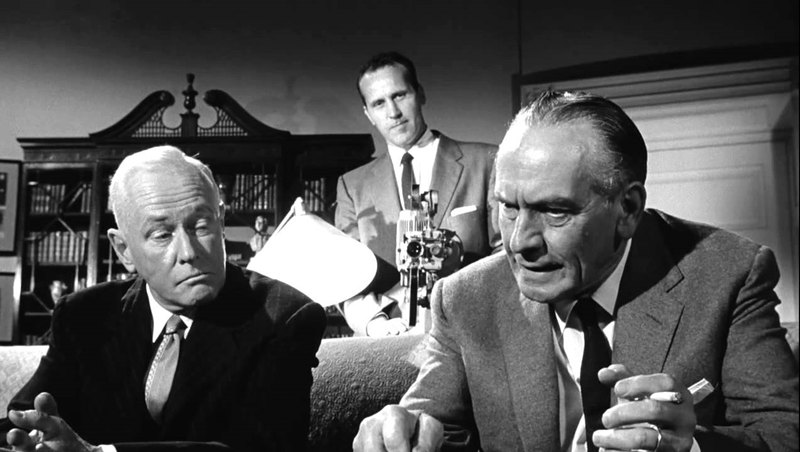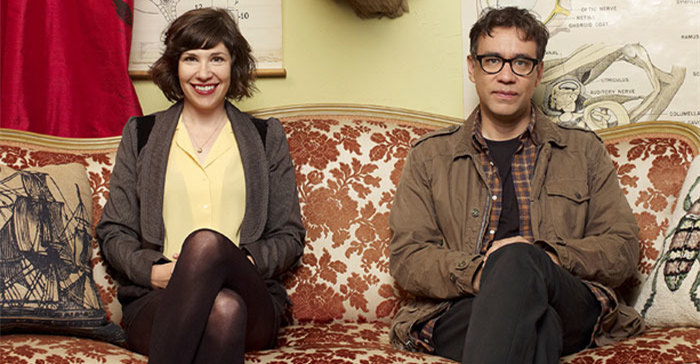“In each of us, two natures are at war—the good and the evil. All our lives the fight goes on between them, and one of them must conquer. But in our own hands lies the power to choose—what we want most to be, we are.” –Opening title to the 1920 silent horror film “Dr. Jekyll and Mr. Hyde.”
When I read the press release for “Horror Classics: 50 Movie Pack” from Mill Creek Entertainment, I was a happy camper. Why? Well, you try finding 50 classic anything in a single bundle. And then try fitting it onto twelve double-sided DVDs. I’m not quite sure how they did it, but in the process the studio generated a “set [that] represents the single best selling 50-Movie collection in Mill Creek’s history.” The set runs well over 62 hours, and is loaded with films I know you will recognize, plus a fair number you probably won’t. Still, it is entertaining and worthwhile, especially amidst a new era in horror that appears conflicted and is looking in multiple corners of multiple studios to find its true identity.
Horror films today are drastically different from those featured in this set. I was raised fearing Jason Voorhees from “Friday the 13th,” Freddy Krueger from “A Nightmare of Elm Street” and Michael Myers from “Halloween.” Today’s youth have Eli Roth’s torture based “Hostel” series, the smartly thought out but poorly executed “Saw” films, those New Line Cinema “Final Destination” flicks and plenty more (sometimes better) to choose from, including 2002’s “The Ring” and 2001’s “The Others.” Some in this new incarnation rely on blood and guts, while others prefer suspense and creepy moments. A few feature decent scripts, high quality camera work and fine special effects. But from my perspective, the consistency you’ll find in “Horror Classics: 50 Movie Pack,” which spans from 1920’s “Dr. Jekyll and Mr. Hyde” to 1968’s superb “Night of the Living Dead,” directed by horror icon George A. Romero, is on a much higher and better level. At that time, it wasn’t about out-doing another filmmaker or title, or overwhelming audiences with violence, voyeurism or a madman’s whim. I believe it was about the story and characters first, the execution second and the impact these items each had third.
When I was a kid, I remember watching an anniversary show celebrating 50 years of “Looney Tunes” my parents recorded on our old Sony Betamax (it still works, I’ll have you know). Cartoon mastermind Chuck Jones was interviewed and asked how he felt about making millions of children laugh over his life’s work. Jones replied simply that his animation team didn’t make all those cartoons for kids, but rather, they made them for themselves. I’d wager the same is true for many films in this set. Some lesser-known titles, like “Dementia 13” (1963) and “King of the Zombies” (1941), were probably in the spotlight for less than those hotly coveted fifteen minutes of fame, but were made by men and women with a story to tell and a desire to do it. Others titles had star power, like “House on Haunted Hill” (1959) with Vincent Price and “White Zombie” (1932) featuring Bela Lugosi, where big names from the genre aided a director’s cause. My guess is the big names likely wanted to be in such pictures, though I know the same can’t be said for today’s big names with every film they star in.
This conveniently leads to my two favorite things about this set. First, many of these titles get right to the point and tell you what the heck they are about from the get go. Not much grey area in titles like “The Ape” (1940), “The Brain that Wouldn’t Die” (1962) or “The Giant Gila Monster” (1959). You can pretty much decipher what the film will be about, just as you can with something like, say, “Snakes on a Plane” (2006). Second, these are films that relied on actor and actress recognition rather than character recognition. I’d bet very few horror fans could name five actors who have played Jason Voorhees in the “Friday the 13th” series, but any decent film buff should be able to tell you that Lon Chaney, Sr. was kind of a big deal in “The Hunchback of Notre Dame” (1923) and “The Phantom of the Opera” (1925). Those actors who played characters, like Boris Karloff, took center stage rather than the characters seizing the reigns, like Michael Myers in the “Halloween” series. Rather than having a villain become so general nearly anyone could play him, these classics gave the actors autonomy to shape a good or bad guy to fit their skill.
For a complete list with all film titles, you’ll want to select the “Release details” tab atop this page. I thought I’d share intricate details on just a few I watched, as there are some good titles, some bad and a hidden gem or two. The set offers a superb balance, with many titles you will know and many you won’t. That’s partly what makes it such a good blend to watch and enjoy.
“Attack of the Giant Leeches” (1959) pits a new sheriff in a small, rural, deep south community against the locals as all try to figure out who or what is responsible for multiple mysterious disappearances in the nearby lake. Strangely, a recovered body has rigorous suction signs all over it, and a local power plant’s excessive waste dumping may be contributing to a deadly creature lurking deep in the lake’s underbelly. Can the sheriff prove his wealth to the locals and destroy this unseen enemy before more victims are had?
“The Black Dragons” (1942) stars Bela Legosi as Dr. Melcher, a plastic surgeon hired by a Japanese organized crime society to perform operations on six high-profile members so they resemble high ranking American businessmen. One by one, the imposters take over for the real men and work to dismantle the American war effort, until Melcher seeks his own revenge and is pursued by an FBI chief and agent. It’s a race against time to get to the last surviving “businessman” before he meets his maker, literally and physically. Legosi is chillingly good from start to finish, and creepy enough to make you wonder how much actual acting he had to do.
“Carnival of Souls” (1962) begins with a woman swimming away from a vehicle that drove off a bridge during a drag race accident. The sole survivor, the woman leaves for a new job, only to see horrific images stalking her and hallucinations plaguing her daily life. She wanders into a rundown and closed nearby carnival, seeking answers to her predicament and resolution to her unease. If you’ve ever read Ambrose Bierce’s short story “An Occurrence at Owl Creek Bridge” (first published in 1890) or seen “The Twilight Zone” episode with the same name (it aired in 1964), you’ll quickly identify with how “Carnival of Souls” runs its course. Scary? Not so much. Eerie? You bet.
Some titles in the set were ground breaking, genre defining and culturally significant. Others likely came and went in a few weeks. Wherever each individual film ranks on the horror food chain, all deserve a place in this set. It is extremely rich with variety and spans a significant time within the genre where many components changed, improved and were rearticulated. More importantly, it brings forward many traditional titles and names that are lost in today’s “horror” definition, and reestablishes their role as foundation forming and strengthening. Overall, the collection is impressive for its diverse offering, its layout over twelve double-sided discs and its price and value to the educated horror fan.
Video:
The films are presented in two methods: most appear in full screen format, yet a few are shown in a 1.78:1 aspect ratio. The picture quality isn’t great, but that was hardly a surprise, especially considering some films in the set are nearly 90 years old. Cracks in the video are pretty frequent, and on occasion the films skip to the next frame in a not so obvious transition. My expectations weren’t all that high to begin with, and even though I wasn’t surprised with how things looked, there were a couple bright spots. For example, the movies I watched filmed after 1955 had better lighting and camera work compared to those shot prior. There are also some pretty visible and clear, albeit primitive, special effects that you can absorb quite well (hiding them wasn’t the art form it is today).
Audio:
While I’m sure the Dolby Digital 1.0 soundtrack is a step up from where these films were when they first debuted, it unfortunately still lacks something special. Of course, there are a silent handful in the set where you don’t get dialogue at all, and the music seizes your eardrums for a roller coaster ride. Even though the dialogue and sound effects cut in and out, and sometimes don’t completely match up with the action on screen, the musical selections are haunting and well placed. Pipe organs, string orchestras and pianos lend a unique, eerie feeling to what are already pretty creepy tales, and for the most part, music is what entertains your ears the most. Unsurprisingly, there are no other language tracks than English, and no subtitles.
Extras:
None advertised or provided. Whenever I encounter sets highlighting older, classic films, I tend to wonder what other reviewers, directors in the same genre or film historians might have to say. I bet this undertaking would be costly and take up disc space, just two among many reasons there may be no extra content with this set.
A Final Word:
As a genre, horror has undergone significant change over time, evidenced by the distinctions in nearly five decades that “Horror Classics: 50 Movie Pack” spans, and the nearly four decades from 1970 to the present that it doesn’t. I’ll leave it to you to determine which era you prefer, but just know that even today, in our world rich with special effects, technology and huge budgets, directors still borrow and repurpose concepts from those who came before them. There are probably many reasons for this, but I tend to think they understand many classics in their genre, including a handful featured in this set, are good things, and that good things never truly die…even in a horror flick.


